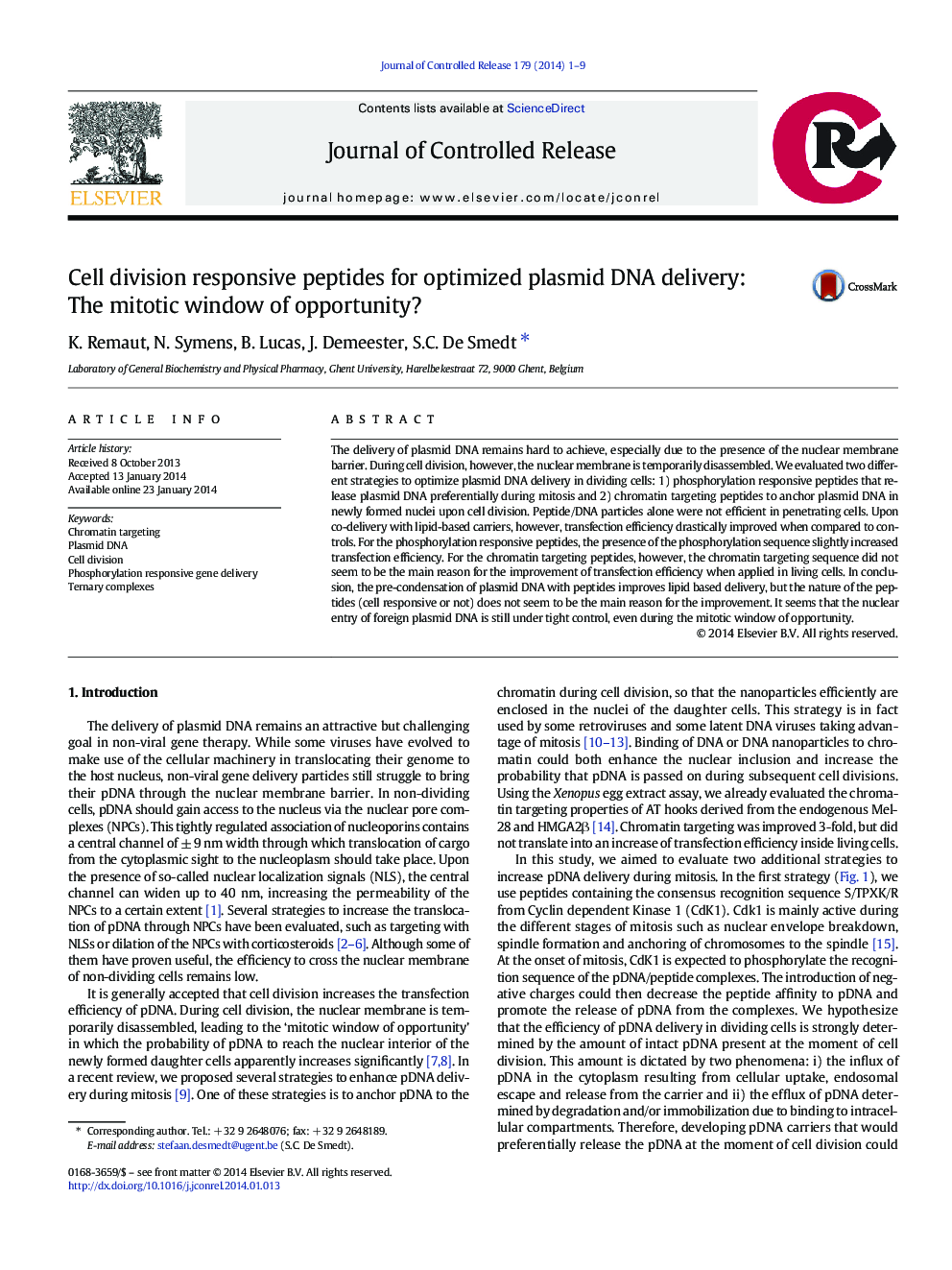| Article ID | Journal | Published Year | Pages | File Type |
|---|---|---|---|---|
| 1424105 | Journal of Controlled Release | 2014 | 9 Pages |
The delivery of plasmid DNA remains hard to achieve, especially due to the presence of the nuclear membrane barrier. During cell division, however, the nuclear membrane is temporarily disassembled. We evaluated two different strategies to optimize plasmid DNA delivery in dividing cells: 1) phosphorylation responsive peptides that release plasmid DNA preferentially during mitosis and 2) chromatin targeting peptides to anchor plasmid DNA in newly formed nuclei upon cell division. Peptide/DNA particles alone were not efficient in penetrating cells. Upon co-delivery with lipid-based carriers, however, transfection efficiency drastically improved when compared to controls. For the phosphorylation responsive peptides, the presence of the phosphorylation sequence slightly increased transfection efficiency. For the chromatin targeting peptides, however, the chromatin targeting sequence did not seem to be the main reason for the improvement of transfection efficiency when applied in living cells. In conclusion, the pre-condensation of plasmid DNA with peptides improves lipid based delivery, but the nature of the peptides (cell responsive or not) does not seem to be the main reason for the improvement. It seems that the nuclear entry of foreign plasmid DNA is still under tight control, even during the mitotic window of opportunity.
Graphical abstractFigure optionsDownload full-size imageDownload high-quality image (221 K)Download as PowerPoint slide
